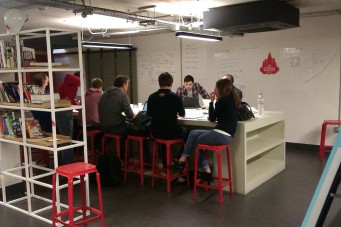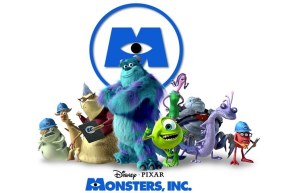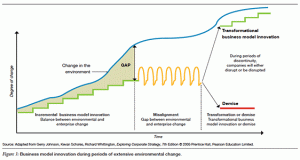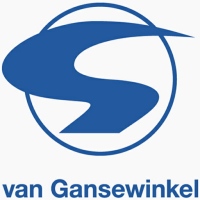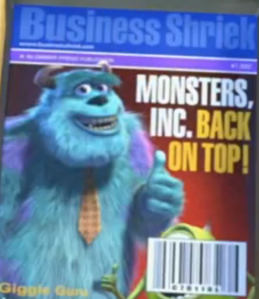The beginning
In January 2012 I moved to London. I had a flexible contract as a sales assistant with a minimum wage salary. I barely had enough money to pay the rent and the transport expenses. Ergo I could never eat out.
It was the official start of my baking experimentations. I occupied all my spare time to cook, thus I became more and more expert and, with my surprise, even creative at baking: I had ever thought that who was creative at such a mysterious art should have been born like that. Finding myself under the same definition made me really passionate.
I couldn’t imagine that such a passion could have been so strong to drive me and my team into my first business experience.
—
In October 2012 I was admitted at the MA Creative Economy at Kingston University; we had just formed the Young Enterprise teams, and we were actually registering each team on website.

As business teams we were supposed to create something which could solve a problem we encountered or observed in our living context.
A couple of days before, I was preparing the dinner. I was about to struggle trying to stir the risotto and then putting the spoon in the balance on the border of the pot, in order not to smear the kitchen surface. I failed: the tool stayed in its position for a while, but then it fell every time.
I thought that maybe many women like me had the same; therefore I sketched a spoon hanger which could be attached to the border of a pot. I showed it to my team mate Maria: she found it a clever idea, and push me to speak with the others, Lucy, Natalie and Angelika. They liked it so much that as soon as I proposed to call ourselves “The Spoonist” they eagerly agreed.
The observation
During our first meeting we started discussing about the brand. We decided to change our name in QB- quanto basta, which means just as much as needed, and is a typical kitchen unit used in traditional recipes.
That was the same day of our first “observation”: I was cooking for all of us, and the team examined the difficulties I encountered.
 With hindsight, if customers experience is what shapes all perceptions and value of the brand, as Bernd Schmitt and David Rogers underline in their “Handbook on Brand and Experience Management” it would have been better to observe external people cooking, ask them questions and not even name our idea of the product. Just afterwards it would have been appropriate to start to brainstorm ideas about the brand, embracing a “holistic view of costumer value that encompasses rational and emotional benefits” (SCHMITT, ROGERS, 2008).
With hindsight, if customers experience is what shapes all perceptions and value of the brand, as Bernd Schmitt and David Rogers underline in their “Handbook on Brand and Experience Management” it would have been better to observe external people cooking, ask them questions and not even name our idea of the product. Just afterwards it would have been appropriate to start to brainstorm ideas about the brand, embracing a “holistic view of costumer value that encompasses rational and emotional benefits” (SCHMITT, ROGERS, 2008).
After a couple of weeks we found many competitors, and we realized we couldn’t effort the costs of the materials as well- that was another conceptual fault: we wanted to make a product made by expensive wood, but the reason we wished that was justified just by our perspective, without any proper market research.
Since we were already so immersed into our brand, we found more difficult to adjust our product rather than restart from the beginning, even if this is exactly what a startup should expect most of the times. As Eric Ries sustains, “instead of making complex plans that are based on a lot of assumptions”, exactly like what we did, we should have made” constant adjustments with a steering wheel called Build- Measure- Learn feedback loop” (RIES, 2011). We didn’t didn’t apply Ries’ validated learning at all, and this is probably why therefore we repeated the same error.
A New Idea
When I was a sales assistant I had a minimum wage salary; as I was also attentive to eat healthy, I started to cook my own lunch at home. Being an environmental friendly person, I hated wasting the plastic bags I used to carry my lunch: so with my boyfriend Aldo I designed a lunch bag. Since QB was in need of a new idea, I proposed it and the team was enthusiastic.
I was sure there was a need of the product in the market. I noticed that almost every Londoner used to buy meals around. I made some researches online and luckily I found many statistics regarding a high amount of expenses per capita for lunch out, other than alarming articles on the dubious healthiness of take away and fast food meals.
We started brainstorming about product development. Lucy made a model out of fabric: by the end of November we were the first team which had a prototype. Nevertheless we repeated the same mistake: we didn’t follow Steve Blank’s Customer Development. We didn’t “get out of the building” before creating the brand and defining our persona. We should have tested our product from the very beginning with just a sketch, to find out whether our lunch bag was “a vision or a delusion”. (RIES, 2008).
Blue Ocean and Experience Design

As long as we didn’t create a new product- there were already different lunch bags on the marketplace-, from a first sigh it couldn’t have been told we developed any Blue Ocean strategy.
Actually, I noticed that people liked the idea of bringing their own lunch, but many of them were not capable to cook or were lack of meals ideas. The Internet was already full of blogs about food and recipes, nevertheless I saw an opportunity. According to the case of the Cirque du Soleil, which, “breaking through the boundary traditionally separating circus and theatre, made a new and profitable blue ocean from within the red ocean of the circus industry”, I realized that we could act in little like a Blue Ocean company by matching the food-blogosphere with the bags market. (KIM, MAUBORGNE, 2004)
I proposed to publish on our website simple recipes not for every visitor: just for our customers. Following the rules of the Experience Design Manifesto, our aim was to make people more confident of their capability of cooking, to inspire them and feel better. We wanted to transmit them the importance of a healthy and environmental-friendly lifestyle, but also make them have fun while baking. Last but not least, our recipes sharing community was aimed to “strengthen relationships between people that live the same experience” as well. (PEREIRA, 2008)
Design Thinking
It was Natalie who insisted on “less is better”. She was really pragmatic. I was the exact opposite, I wanted to add dozens of features to our lunch bag. While exploring Design Thinking, I discovered how much what Natalie sustained made sense. We followed her.
Our idea was respecting almost all of the 10 rules of Design Thinking. It was innovative: it matched the food blogosphere and the bags market; useful: well, at least we assumed that; aesthetic: it was functional and beautiful at the same time; understandable: it reminded the paper brown bag of the childhood, so it was “already seen”; honest: it was what it seemed; long-lasting and environmental- friendly: it was washable, reusable and an alternative to plastic bags; simple, with the pleasure of Natalie: our final design was just a sack with a ribbon to close it. (RILEY, 2013)
Fail

As we assumed our target was composed of students, considering they have to eat lunch at University and usually they have little money to spend, Natalie and Maria went to interview some of the potential customers. The result of our first official market research was a disaster: almost every people declared they weren’t interested neither in our product nor in the community. Some others said they weren’t willing to pay the price we set.
Many startups like us are mistaken at this step. They “fail for lack of customers”, because they don’t “attempt to learn about their customers (or potential customers) until it is too late”. (RIES, 2008)
Luckily we were not that late in the process- it was still December- so we completely changed our target into female office workers between 25 and 40. For the third time we didn’t go out of the building before going on with the plan. We assumed. We didn’t clearly understand that customer development wouldn’t have been “an excuse to slow down or change the plan every day” but “an attempt to minimize the risk of total failure by checking” our “theories against reality”. (RIES, 2008).
Challenges
In December Lucy left us due to personal reasons. She was the leader not because she was the official Manager of the team. As Diego Rodriguez wrote on his blog, she “made the difference by acting”. Since the beginning she acted “on what she knew”– branding and product design- and “felt it was right”. (RODRIGUEZ, 2013) She was the only member who was already working in a business. As a startup, we were living in a state of “extremely uncertainty”, and this meant that the entire project could have easily failed. (RIES, 2011) Lucy was willing to risk her personal reputation for the good of QB. That is why we got lost for a while after her departure.
Angelika became the new leader. We had two urgencies at that time: getting both the product and the website done. Lucy had already found a manufacturer who apparently was interested in making our lunch bag, thus Angelika, Maria and Natalie tried to contact him and had a long journey in the Warwickshire to visit the factory.
Since I was the only team member who knew something about graphics and webdesign, I decided to take care of the website. I bought the domain, installed wordpress and started creating my own child theme during my spare time- I had already a full-time job. Although the huge number of forums, tutorials and communities of developers, it has been an extremely hard work. I assumed to publish it in 3 weeks: it took 3 months. The final version was online at the end of March.
In the meanwhile our manufacturer disappeared. Angelika and Maria tried to call him many times, but in the end he wasn’t interested in our business any more. It was February. The first trade fair we were supposed to attend was at the end of the month. That meant we had to sew the bags ourselves. From a Blue Ocean strategy point of view it wasn’t that bad: by sewing the bags on our own we managed to make the product low-cost.
Angelika went to Lucy’s to learn how to sew, and took her sewing machine. We passed entire days sewing all together at Angelika’s – she spent even more time -, and for the end of we had almost 20 products done, and finally started to sell.
Personal Epic Fails
The extreme delays of both the manufacturing and the website availability postponed our social media presence. In other words, to get our product and service done in the best way, we diverted our attention from the relationship with customers to the design and production. Instead of accelerating the feedback loop Build-Measure-Learn of “The Lean Startup”, we retarded it.
As a consequence, our sharing community actually never worked. It was mainly my fault. Even though I was supposed to be the most expert of the team in Social Media, I lost myself designing the website. I wanted it to be perfect.
In many of his speeches about customer development, Steve Blank underlined that the unfortunately diffused approach “build it and they will come” is largely wrong, because “issues are customer acceptance and market adoption”. (BLANK, 2008)
Social Media is today’s most effective channel to speak with potential customers and to test assumptions in order to accelerate the feedback loop. Nevertheless I moved it completely to the background.
Working on the website made me forget the impulse which should drive every startup: passion. Passion and Love are the first two secrets of success. I had both of them at the beginning. The story I told you speaks for me. Before developing the website, I used to create many recipes and took pictures of them. After that I just wanted to get rid of it, because I was working hard, yet I wasn’t enjoying it. (JOHN, 2005)
My team could felt that my enthusiasm was lowering, and that effected it as well. I wasn’t the leader, but I was the core: the lunch bag was my creature. I didn’t motivate my team; I became even negative and dubious about the future of QB.
Lessons for the future
QB was my first startup experience. It was the first business project I have ever been involved with. I never learned more from a University project than at MACE. To be sincere I wasn’t so used to fail. Thanks to Quanto Basta I became able to accept my faults. Moreover, it’s not all about admitting mistakes. The best learning I am putting in my pocket is the 8th rule of success: persist. Persist to failure and to Criticism, Rejection, Assholes and Pressure (CRAP). And never give up.
References
(BLANK, 2008) Steve Gary Blank, “The Customer Development Methodology”, slideshare presentation for Stanford Technology Venture Program’s Roundtable on Entrepreneurship Education, published by Venture Hacks, last access on 23/05/13, available at http://www.slideshare.net/venturehacks/customer-development-methodology-presentation
(BLANK, 2008) Steve Gary Blank, “The Four Steps to the Ephiphany- Successful Strategies for Products that Win”, Third Edition, 2006, pdf file published by Lulu.com
(BRAZ, 2008) Andre Pereira das Neves Braz, “Experience Design Manifesto”, 2008, last access on 23/05/13, available at http://www.brazandre.com/manifesto/
(JOHN, 2005) Richard St. John, “8 secrets of success”, February 2005, published by TED Talks in December 2006, last access 23/05/13, available at http://www.ted.com/talks/richard_st_john_s_8_secrets_of_success.html
(KIM, MAUBORGNE, 2004) W. Chan Kim, Renée Mauborgne, “Blue Ocean Strategy”, Harvard Business Review, October 2004, last access on 23/05/13, available at http://hbr.org/2004/10/blue-ocean-strategy/ar/1
(LANDBERG, 2003) Max Landberg, “The Tao of coaching: boost your effectiveness at work by inspiring and developing those around you “, Profilebooks, 2003
(RIES, 2011) Eric Ries, “The Lean Startup”, Portfolio Penguin, 2011
(RIES, 2008) Eric Ries, “What is customer development?” , Startup Lesson Learned, 8 November 2008, last visit on 22/05/13, available at http://www.startuplessonslearned.com/2008/11/what-is-customer-development.html
(RILEY, 2013) Wells Riley, “Startups, this is how design works”, 2013, last access on 23/05/13, available at http://startupsthisishowdesignworks.com/
(RODRIGUEZ, 2013) Diego Rodriguez, “The heart of leadership”, Metacool- thoughts on the art & science of bringing cool stuff to life, 01 May 2013, last access on 23/05/13, available at http://metacool.typepad.com/metacool/2013/05/the-heart-of-leadership.html
(SCHMITT, ROGERS, 2008), Bernd H. Schmitt, David L. Rogers, “Handbook on Brand and Experience Management”, Edward Elgar Publishing, 2013
Bibliography
Babak Nivi, “Customer Development: How to develop your customers like you develop your product”, Venture Hacks, November 5th 2008, last access on 23/05/13, available at http://venturehacks.com/articles/customer-development
IBM, “The new collaboration: enabling innovation, changing the workplace”, IBM Corporation, 2008
Mirko Pallera, “CREATE!”, Sperling & Kupfler Editori S.p.A, 2012
Sheryl Sandberg, “Lean In”, WH Allen, 2013
Steve Blank, “Embrace failure to start up success- An ambitious US programme aims to turn scientists into entrepreneurs.Go on, says Steve Blank, unleash your inner capitalist.”, NATURE International weekly journal of science, World View, A personal take on events, 8 SEPTEMBER 2011, VOL 477, 133, Macmillan Publishers Limited, last access on 23/05/13, available online at http://www.nature.com/news/2011/070911/full/477133a.html
Theodore Levitt, “Marketing Myopia”, 1960, in Best of HBR, July-August 2004
Tony Robbins, “Why we do what we do”, TED Talks, filmed February 2006, posted June 2006, last access 23/05/13, available at http://www.ted.com/talks/tony_robbins_asks_why_we_do_what_we_do.html
51.507335
-0.127683
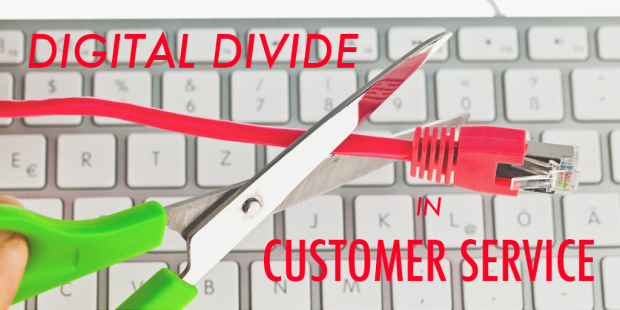 Yesterday I had a very bad customer experience with Telecom Italia Mobile, the main telephone service provider of Italy. The detailed story is available here.
Yesterday I had a very bad customer experience with Telecom Italia Mobile, the main telephone service provider of Italy. The detailed story is available here.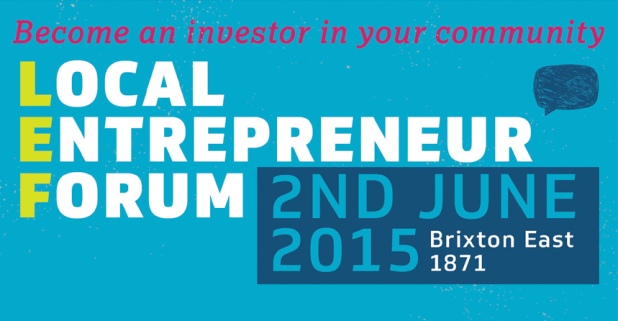

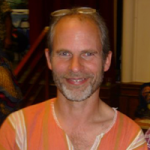

 he LEF, five selected social enterprises will pitch to their local community with the aim ofpledging to invest money, but also time, resources, skills, enthusiasm, Facebook likes, hugs, and basically any other kind of support.
he LEF, five selected social enterprises will pitch to their local community with the aim ofpledging to invest money, but also time, resources, skills, enthusiasm, Facebook likes, hugs, and basically any other kind of support. The Community Think Tank will be in the afternoon, together with a Pitch and Pledge session with the selected social enterprises, such as The Kitchen Table Projects, The Grain Grocer, Spiral, The Library of Things.
The Community Think Tank will be in the afternoon, together with a Pitch and Pledge session with the selected social enterprises, such as The Kitchen Table Projects, The Grain Grocer, Spiral, The Library of Things. The LEF will also be a networking opportunity for local entrepreneurs, investors, decision-makers, and residents, and for all to have a part to play in having the kind of local economy they want to see in Lambeth and in the world.
The LEF will also be a networking opportunity for local entrepreneurs, investors, decision-makers, and residents, and for all to have a part to play in having the kind of local economy they want to see in Lambeth and in the world.



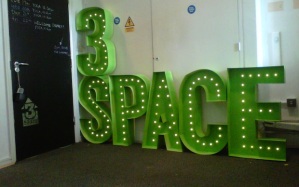
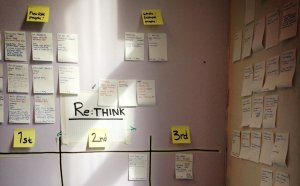


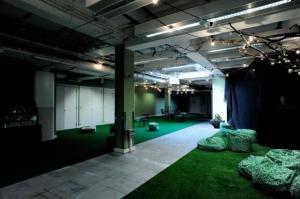


 Rachel told us her story, her life. A story of great successes, and then great fails.The second speaker was
Rachel told us her story, her life. A story of great successes, and then great fails.The second speaker was 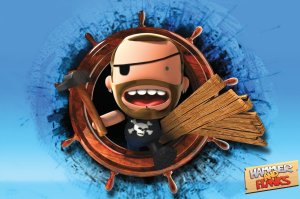
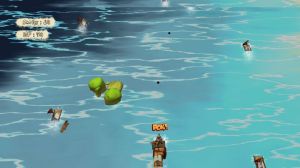
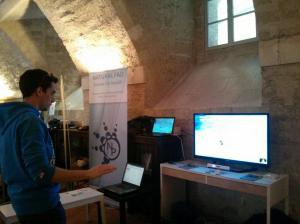

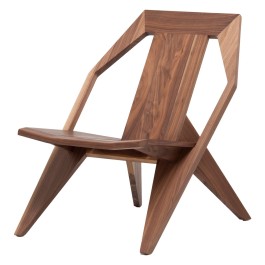
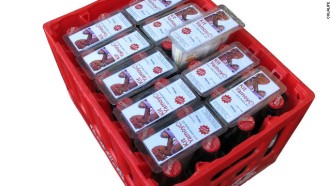
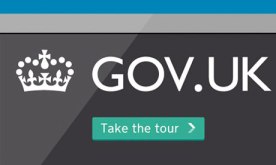

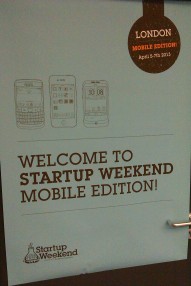
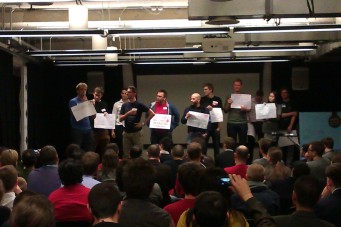
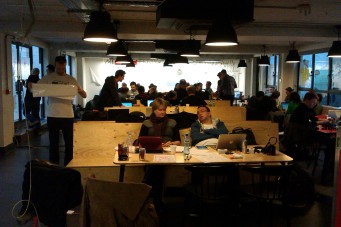 The Start-up Weekend is an experience I suggest to everyone. The reason I think this is because of the time they give you, which is really short. You have to come up with an idea, choose your team mates without knowing them, dividing the roles within the team, write the business plan, curate the branding and the design, do market research, do the prototype, do the interviews, do the finance, and pitch. In 54 hours. Impressive, isn’t it?
The Start-up Weekend is an experience I suggest to everyone. The reason I think this is because of the time they give you, which is really short. You have to come up with an idea, choose your team mates without knowing them, dividing the roles within the team, write the business plan, curate the branding and the design, do market research, do the prototype, do the interviews, do the finance, and pitch. In 54 hours. Impressive, isn’t it?